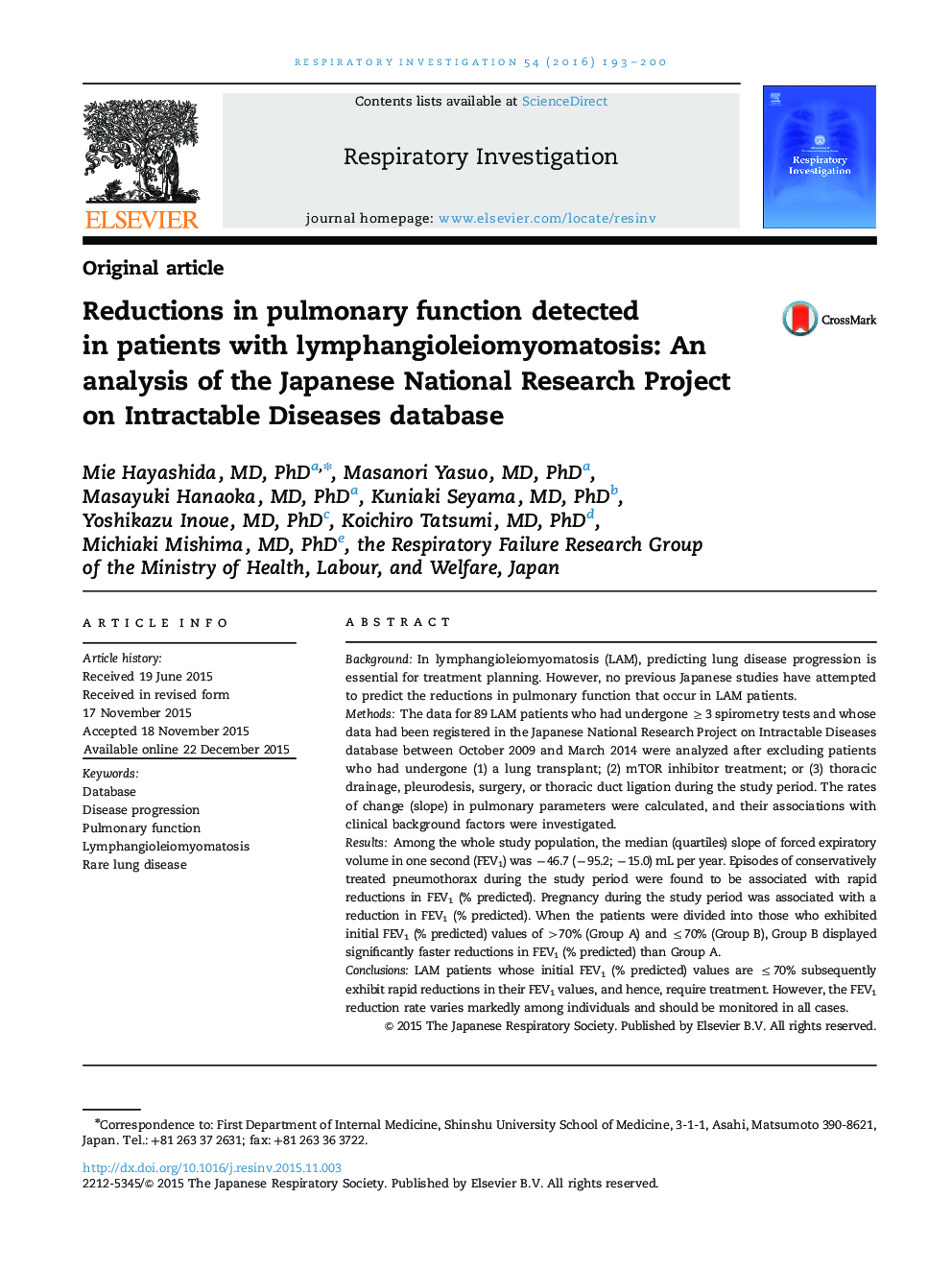| Article ID | Journal | Published Year | Pages | File Type |
|---|---|---|---|---|
| 3418568 | Respiratory Investigation | 2016 | 8 Pages |
BackgroundIn lymphangioleiomyomatosis (LAM), predicting lung disease progression is essential for treatment planning. However, no previous Japanese studies have attempted to predict the reductions in pulmonary function that occur in LAM patients.MethodsThe data for 89 LAM patients who had undergone ≥3 spirometry tests and whose data had been registered in the Japanese National Research Project on Intractable Diseases database between October 2009 and March 2014 were analyzed after excluding patients who had undergone (1) a lung transplant; (2) mTOR inhibitor treatment; or (3) thoracic drainage, pleurodesis, surgery, or thoracic duct ligation during the study period. The rates of change (slope) in pulmonary parameters were calculated, and their associations with clinical background factors were investigated.ResultsAmong the whole study population, the median (quartiles) slope of forced expiratory volume in one second (FEV1) was −46.7 (−95.2; −15.0) mL per year. Episodes of conservatively treated pneumothorax during the study period were found to be associated with rapid reductions in FEV1 (% predicted). Pregnancy during the study period was associated with a reduction in FEV1 (% predicted). When the patients were divided into those who exhibited initial FEV1 (% predicted) values of >70% (Group A) and ≤70% (Group B), Group B displayed significantly faster reductions in FEV1 (% predicted) than Group A.ConclusionsLAM patients whose initial FEV1 (% predicted) values are ≤70% subsequently exhibit rapid reductions in their FEV1 values, and hence, require treatment. However, the FEV1 reduction rate varies markedly among individuals and should be monitored in all cases.
